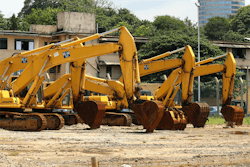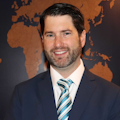Infor's Equipment Rental Software Focuses on User
Because of ERP, keeping up with all the details of equipment rental is a lot easier than it was 25 years ago, when Infor entered the sector. And it just got easier since M3 for Equipment, which covers four business models-- original equipment manufacturers, equipment dealers that sell and support, rental companies, and service providers -- received a user-friendly makeover. Andreas Hellström, Sr. Director Industry Solution Strategy, recently talked to us about it, and how the technology has bridged the generational gap in the industry.
What are a few things the M3 provides?
It maximizes up time and productivity time. That’s what everyone’s looking for. That’s the common denominator.
You’re almost able to take very limited to zero margin on original equipment sale as long as we can build a business model on after-market support. It’s depreciation vs. rental income. On one end, it may help determine what should be under warranty and what should coverage be back to dealer or rental company or end customer. In the dealer world, it can help ensure they are efficiently posting claims to get full credit.
It also takes the machine itself into account. If an Excavator has bunch of idling hours, too many times, it may schedule to have the injectors checked.
What does the newest iteration of M3 bring to businesses?
User experience flexibility is a big focus for us. Now it’s a more guided experience, leading the user to the next step. And being able to report in a much more task driven solution makes it hard to make clerical errors. It’s led to getting more accurate info on invoices, and we have customers that can get invoice in inbox before field engineer leaves the site.
How was this process different than the conventional methods of redesign?
We asked, “How do we make it more task driven, trying to bind together business process with system process through the user experience?”
Software engineers were never going to get us there. For three years now, we started with our interface design agency. We hired fashion designers magazine copy artists, leveraging skill sets from a completely different backgrounds.
It’s benefited all the solutions footprints. They asked different types of questions, looked at it from a completely different perspective. “Why do you have to do three clicks to get to that when it can be done in one step?”
We worked to provide information in a more task-oriented fashion, making it more intuitive. With some businesses solutions, they provide a bunch of options on one screen. You can go one out of 30 places. That’s great if you know biz processes inside and out. The newer generation tends to be lower skilled on the engineering side. They don’t have long history of understanding how all these pieces work, coming from smart phone and tablet world, the consumer grade user experience.
gett
The generation starting to retire is very mechanical, and engineering oriented. They were used to running on index cards, planning boards. They didn’t want to go into the software if they could help it.
They were afraid to make a mistake. But the ERP guides them through, and they feel less afraid. Definitely the feedback is “we wish we had this back when we learned the system.”
They are wowed and say it’s so much more intuitive than what we had. That might not have been the focus, but that’s one of the positive outcomes.
About the Author
John Hitch
Editor, Fleet Maintenance
John Hitch, based out of Cleveland, Ohio, is the editor of Fleet Maintenance, a B2B magazine that addresses the service needs for all commercial vehicle makes and models (Classes 1-8), ranging from shop management strategies to the latest tools to enhance uptime.
He previously wrote about equipment and fleet operations and management for FleetOwner, and prior to that, manufacturing and advanced technology for IndustryWeek and New Equipment Digest. He is an award-winning journalist and former sonar technician aboard a nuclear-powered submarine where he served honorably aboard the fast-attack submarine USS Oklahoma City (SSN-723).

